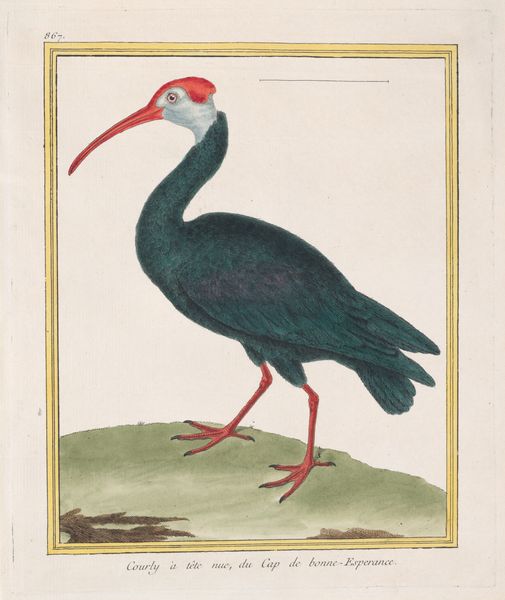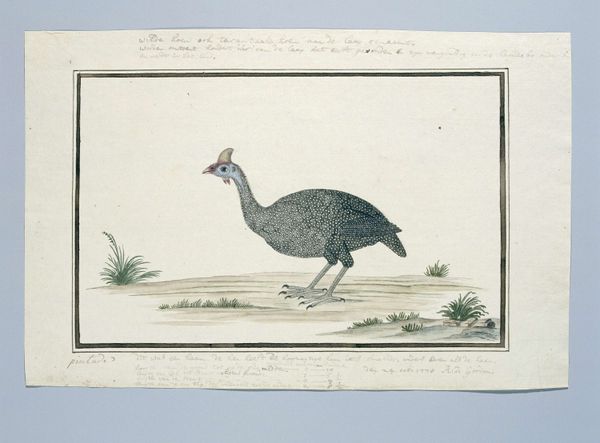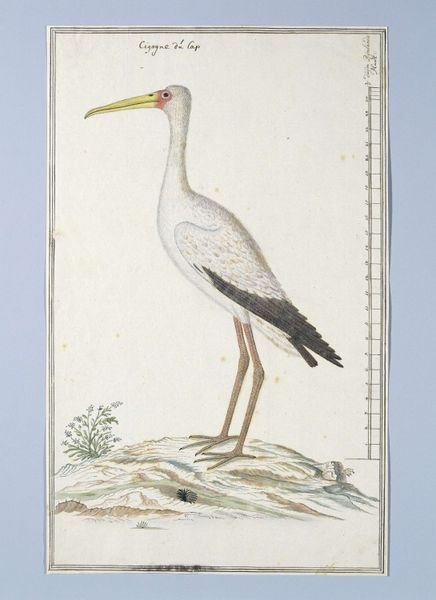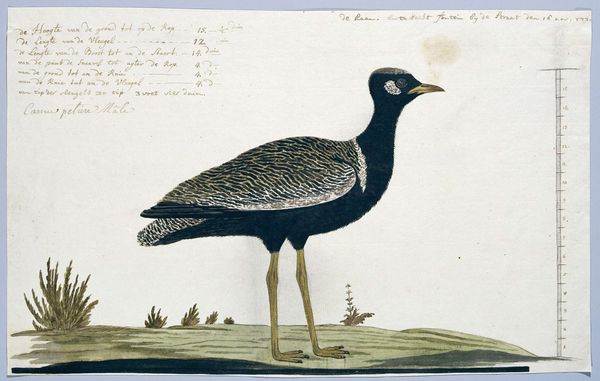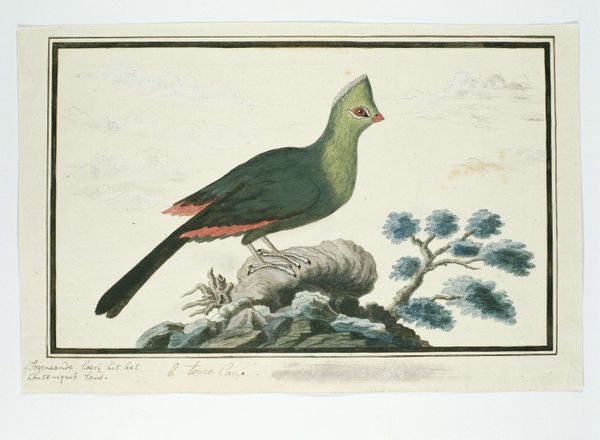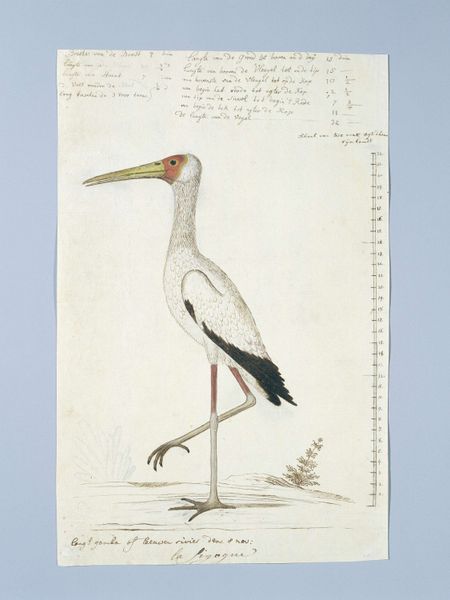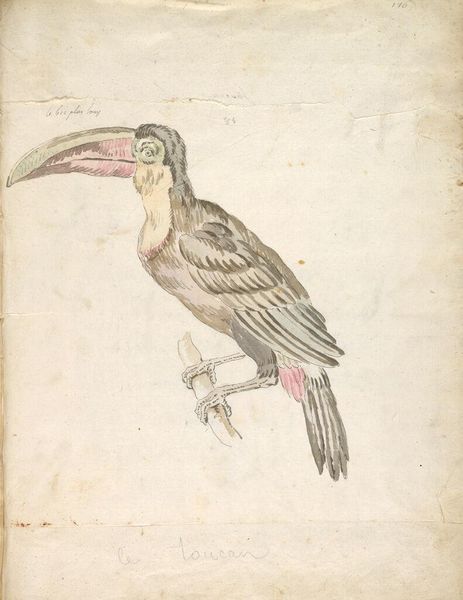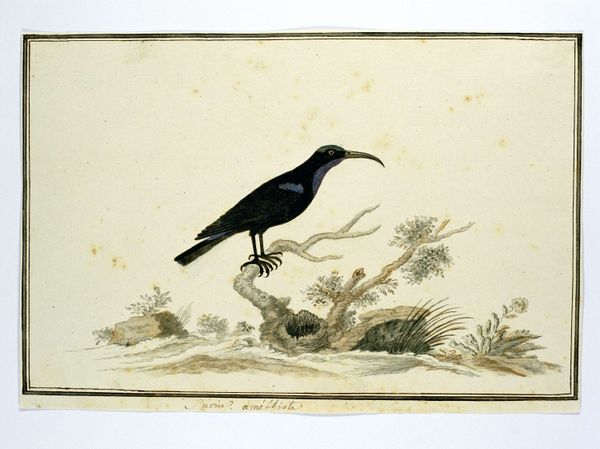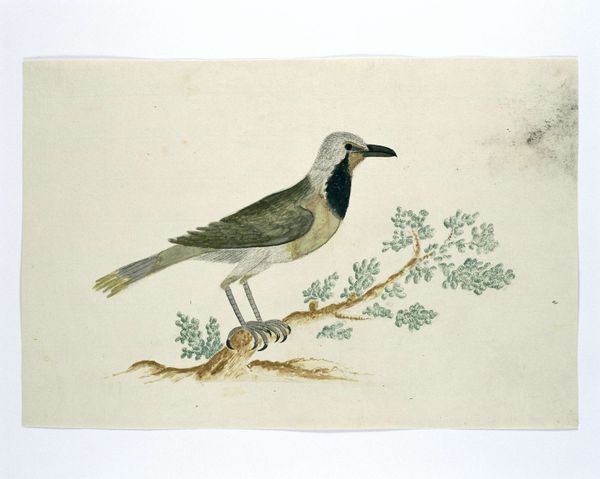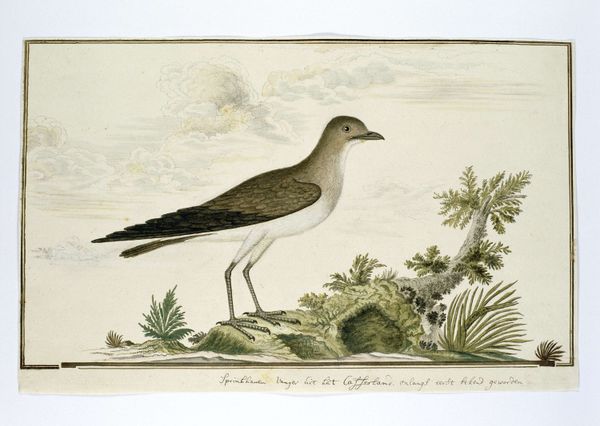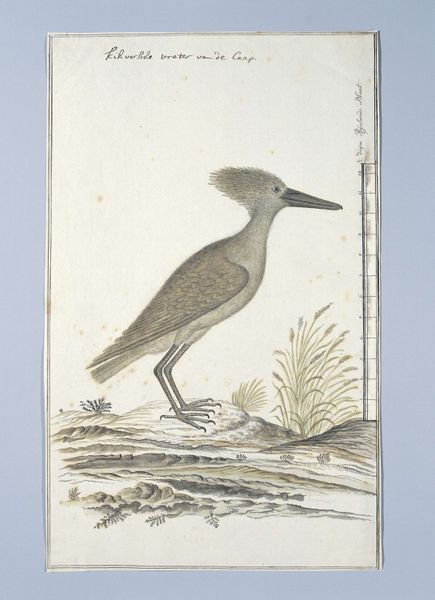
drawing, paper, watercolor
#
portrait
#
drawing
#
water colours
#
narrative-art
#
landscape
#
paper
#
watercolor
#
coloured pencil
#
watercolour illustration
#
watercolor
#
realism
Dimensions: height 660 mm, width 480 mm, height 242 mm, width 391 mm, height 213 mm, width 381 mm
Copyright: Rijks Museum: Open Domain
Curator: Look at the striking textures captured in this watercolour. Editor: Yes, "Geronticus calvus (Southern bald ibis)", as rendered around 1778 by Robert Jacob Gordon. I'm struck by the isolation of the subject. It’s almost like a specimen pinned to a board, the bird positioned so clinically. Curator: Indeed, there’s an interesting tension there. These kinds of images, like Gordon's, are produced through an intensely material process, requiring specific pigments, paper, and of course the artist’s skilled labour. But the result presents a seeming ‘objective’ view, masking its constructed nature. The paper itself, think of the cotton or linen rags needed to create it. Where were these materials sourced and by whose hands? Editor: And in whose service? These images weren't just about cataloguing nature; they were instruments of colonial knowledge production. Think about how this image contributes to an understanding of Southern Africa within the context of expanding European influence and scientific exploration. How would this bird and its habitat have been understood by the local populations? Curator: A good point. The scientific precision speaks to the desire to classify, understand, and ultimately control. Look at the crispness of the watercolour application - how the individual feathers were captured using carefully placed strokes of paint. A very conscious crafting process. Editor: It's difficult not to view the final piece as a political object. This ibis becomes part of a larger narrative of possession. Each stroke and line contributing to a systematic visual inventory linked to political claims. Where and how were the watercolours themselves manufactured and sold, and how did that impact the global pigment trade? Curator: Fascinating. And seeing how those materials are applied and manipulated by human hands—that brings a whole other layer of interpretation. The image invites both scientific and social interpretations. Editor: Indeed, analyzing both the materiality and the historical environment offers a comprehensive perspective on this seemingly straightforward portrait.
Comments
No comments
Be the first to comment and join the conversation on the ultimate creative platform.

